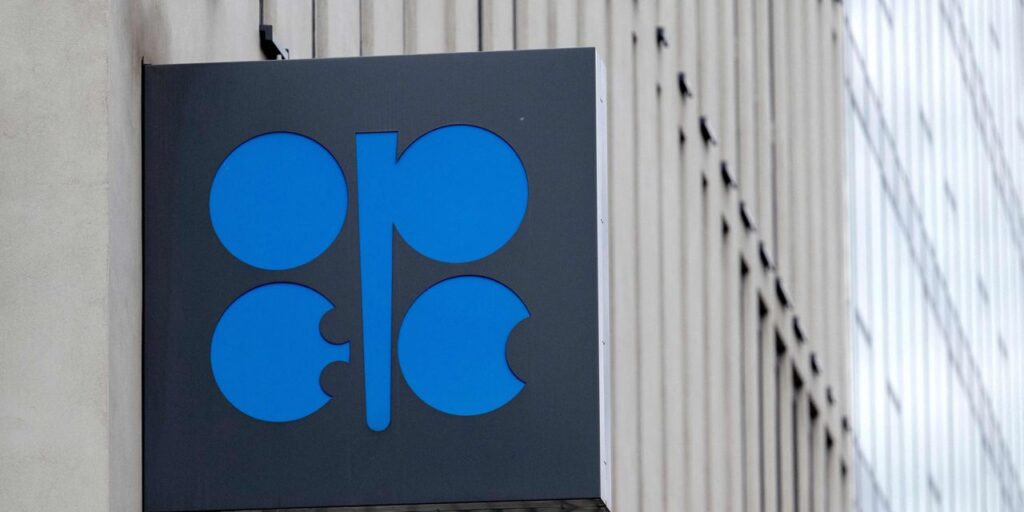Oil futures settled more than 2% higher on Friday, but registered a weekly loss, as traders awaited the outcome of a weekend meeting of the Organization of the Petroleum Exporting Countries and its allies.
Price action
-
West Texas Intermediate crude for July delivery
CL.1,
+1.16% CL00,
+1.50% CLN23,
+1.16%
rose $1.64, or 2.3%, to settle at $71.74 a barrel on the New York Mercantile Exchange. Prices for the front-month contract fell 1.3% for the week, according to Dow Jones Market Data. -
August Brent crude
BRN00,
-0.46% BRNQ23,
-0.46% ,
the global benchmark, gained $1.85, or 2.5%, to settle at $76.13 a barrel on ICE Futures Europe, down 1.1% for the week. Brent and WTI marked their first weekly losses in 3 weeks. -
Back on Nymex, July gasoline
RBN23,
+1.28%
rose nearly 2.7% to $2.50 a gallon, for a weekly loss of 3.5%, while July heating oil
HON23,
+2.84%
gained 1.8% to $2.36 a gallon, with prices up nearly 0.1% for the week. -
July natural gas
NGN23,
+3.40%
added nearly 0.7% at $2.17 per million British thermal units after losing 4.8% on Thursday. Prices logged weekly loss of 10.1%.
Market drivers
WTI and Brent both remain on track for weekly losses of more than 1% after suffering steep May declines that were attributed to worries about the global economic outlook and worries over a potential U.S. government default. Those default worries were put to bed Thursday after the Senate passed legislation to lift the debt ceiling, sending it to President Joe Biden’s desk for signature.
The focus has shifted to a weekend meeting of OPEC and its allies, including Russia — a group known as OPEC+. Traders are gauging prospects for additional production cuts after a surprise round of April reductions failed to give crude a lasting lift.
Read: Uncertainty over Russia, frustration in Saudi Arabia cloud oil-market prospects ahead of OPEC+
“ “There has been no shortage of drama in the lead up to this weekend’s OPEC+ meeting, leaving the market rife with volatility as traders try to read the tea leaves as to what is going on behind closed doors.””
“There has been no shortage of drama in the lead up to this weekend’s OPEC+ meeting, leaving the market rife with volatility as traders try to read the tea leaves as to what is going on behind closed doors,” said Rebecca Babin, senior energy trader at CIBC Private Wealth U.S., in emailed commentary.
Signs that Russia has failed to comply with its own pledge to cut production by 500,000 barrels a day have sparked speculation of a potential rift between Riyadh and Moscow.
“In reality, there are many more reasons for the group to work together than break apart and members will likely remain steadfast in defending their relationship. However, the damage to the market has been done as the negative feedback loop of weaker macro data and OPEC+ risk emboldened sellers,” said Babin.
“The bullish thesis for crude is on life support making the mistake in messaging very costly,” she said.
Babin said the most likely outcome will be no change to output, while a surprise cut would inject more volatility into the market and be interpreted by oil bears as a sign that demand for crude remains weak.
“The objective of this meeting is likely to convince the market that the Saudi-Russia relationship remains intact and that they are ready to act if needed,” Babin said.
Data released Friday from Baker Hughes
BKR,
hinted at a potential fall in U.S. oil output, with the company reporting that the number of active U.S. rigs drilling for oil fell by 15 to 555 this week. That marked a fifth straight week of declines.
Read the full article here













